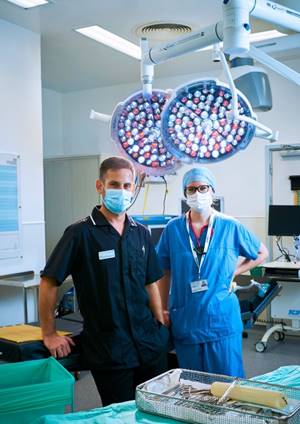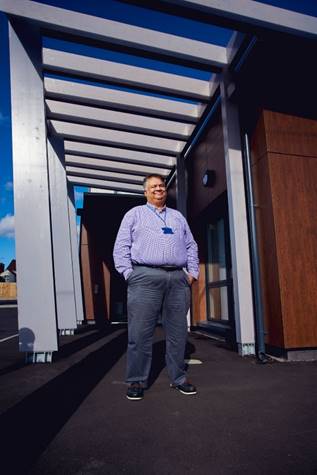Greener National Health Service (NHS) England, 2023
Implementing Partners: NHS Trusts
Published In: COP28 Prospectus of Climate-Health Solutions, 2023
Explore health-relevant side events, news and resources from the 2025 UN Climate Conference.
Health at COP30 >Greener National Health Service (NHS) England, 2023
Implementing Partners: NHS Trusts
Published In: COP28 Prospectus of Climate-Health Solutions, 2023
Estates and facilities account for 15% of NHS England’s carbon footprint. NHS England has committed to decarbonize its estates by 2040, which includes eliminating 3.1 megatonnes of greenhouse gas emissions generated every year from NHS building energy and water use. This will be achieved by investing in buildings and energy efficiency, upgrading heating, lighting, and ventilation systems, installing onsite solar panels to generate renewable energy and by ensuring estates are fully digitally integrated
n 2021, the NHS with the support of the Department of Health and Social Care secured £50 million funding for the NHS Energy Efficiency Fund which will install LED lighting across 64 NHS trusts. The NHS has also secured over £800 million (US $970 million) in investment through the UK Government Public Sector Decarbonization Scheme (PSDS). The PSDS provides grants for UK public sector organizations to fund heat decarbonization and energy efficiency initiatives with the aim of reducing emissions from public sector buildings by 75% by 2037 (against 2017 baseline).
Funding for the NHS from the PSDS is being driven into more than 100 projects across more than 60 local trusts to install innovative energy technologies such as heat pumps, solar panels and LED lighting, leading to significant carbon and financial savings for the NHS. Examples of successful projects include:
Improvements to estates funded through the Public Sector Decarbonization Scheme are helping NHS organizations cut carbon, improve health and save money. The separate NHS Energy Efficiency Fund to install LED lighting is expected to save the NHS £11.8 million while reducing emissions annually by 32,941 kilotonnes of greenhouse gas emissions.
Going forward, national NHS teams will continue to promote the PSDS to local and regional colleagues, to help support the submission of effective and high-quality NHS applications. Alongside this, the NHS will continue to ensure projects are delivered by sharing best practices and driving collaboration. Financial and carbon savings will be evaluated following the completion of the PSDS funded schemes.
There may in future be opportunities to explore alternative funding methods, including Power Purchase Agreements (PPA) and Energy Performance Contracts. Energy Performance Contracts allow for capital improvements which permit funding energy upgrades from cost reductions. PPAs ensure any electricity is directly bought and supplied from a renewable generator at a fixed rate over a long contract period. PPAs can involve renewable developers placing assets (such as solar panels) on a buyer’s site and selling the energy generated back to the buyer. This means electricity can be supplied without using National Grid infrastructure systems, avoiding the variable costs for the transmission of energy included in all energy bills.









of